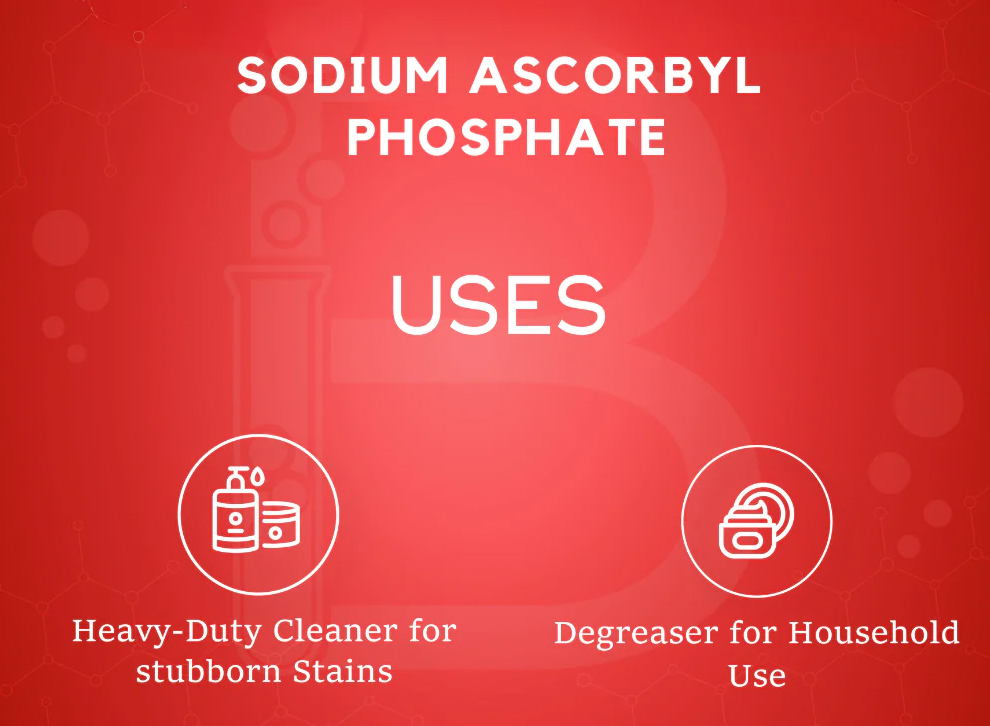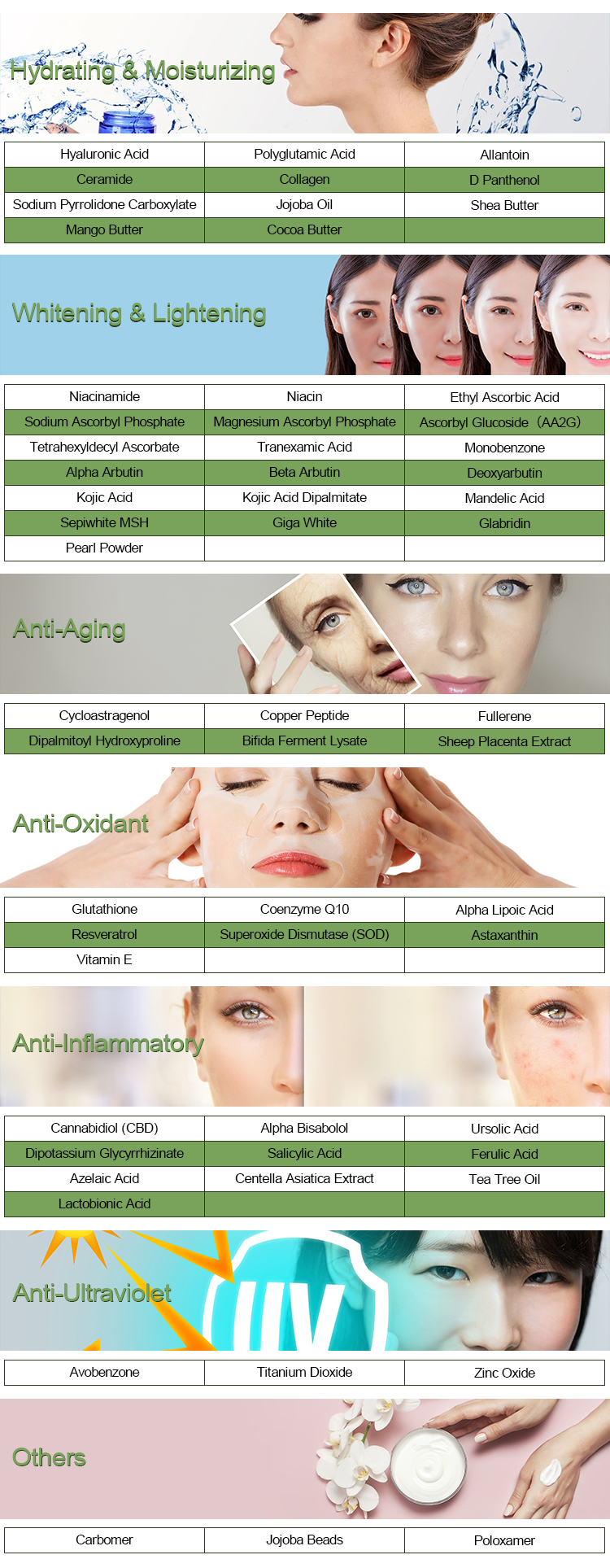Sodium Ascorbyl Phosphate (SAP) is a stable, water-soluble derivative of Vitamin C widely used in skincare for its antioxidant, brightening, and anti-aging properties. Its synergy or contrast with other ingredients depends on the formulation and skin concern.
Synergistic Combinations
- Niacinamide (Vitamin B3) – Works well with Sodium Ascorbyl Phosphate to brighten skin, reduce hyperpigmentation, and strengthen the skin barrier. Unlike pure ascorbic acid, Sodium Ascorbyl Phosphate does not react negatively with niacinamide.
- Vitamin E (Tocopherol) – Enhances antioxidant effects, improving skin protection against free radicals and UV damage.
- Ferulic Acid – Boosts Sodium Ascorbyl Phosphate’s stability and antioxidant activity, similar to its role in stabilizing pure Vitamin C (L-Ascorbic Acid).
- Hyaluronic Acid – Provides hydration and helps Sodium Ascorbyl Phosphate penetrate deeper into the skin.
- Zinc – Beneficial for acne-prone skin when combined with Sodium Ascorbyl Phosphate due to its antimicrobial and anti-inflammatory properties.
- Peptides – Work together with Sodium Ascorbyl Phosphate to promote collagen synthesis and improve skin elasticity.

Potential Contrasts or Conflicts
- AHAs/BHAs (Glycolic, Lactic, or Salicylic Acid) – May lower the pH of a formulation, potentially destabilizing Sodium Ascorbyl Phosphate, though less critical than with L-Ascorbic Acid.
- Benzoyl Peroxide – Can oxidize Vitamin C derivatives, reducing their effectiveness.
- Copper Peptides – May counteract the effects of Sodium Ascorbyl Phosphate, as copper ions can degrade Vitamin C.
- Retinol (Vitamin A) – While not necessarily a negative combination, it may increase irritation for sensitive skin. Layering properly (Sodium Ascorbyl Phosphate in the morning, Retinol at night) helps avoid potential irritation.
Would you like recommendations for a specific skincare goal, like brightening, anti-aging, or acne treatment?
Uses of Sodium Ascorbyl Phosphate
Sodium Ascorbyl Phosphate (SAP) is a stable, water-soluble derivative of Vitamin C commonly used in skincare and cosmetic formulations. It is known for its antioxidant properties and ability to brighten the skin. Here are some of its key uses and benefits:
Uses of Sodium Ascorbyl Phosphate
- Skin Brightening – Helps reduce hyperpigmentation, dark spots, and uneven skin tone by inhibiting melanin production.
- Antioxidant Protection – Neutralizes free radicals, protecting the skin from environmental damage and premature aging.
- Anti-Aging – Stimulates collagen production, reducing the appearance of fine lines and wrinkles.
- Acne Treatment – Has antibacterial properties that can help reduce acne by inhibiting acne-causing bacteria (Propionibacterium acnes).
- Hydration & Skin Barrier Support – Works well with other hydrating ingredients to strengthen the skin’s barrier and improve moisture retention.
- Gentle on Sensitive Skin – Unlike pure Vitamin C (L-Ascorbic Acid), Sodium Ascorbyl Phosphate is more stable and less irritating, making it suitable for sensitive skin types.
- UV Protection (Complementary to Sunscreen) – While not a replacement for sunscreen, Sodium Ascorbyl Phosphate can help mitigate UV damage when used with SPF.

How to Use in Skincare
- Found in serums, creams, lotions, and sunscreens.
- Typically formulated at 1-5% concentration for effectiveness.
- Best used in the morning and/or evening, after cleansing and before moisturizing.
- Works well with niacinamide, hyaluronic acid, and peptides, but should be avoided with highly acidic formulations to maintain stability.
Would you like recommendations on products containing Sodium Ascorbyl Phosphate or guidance on formulating with it?
